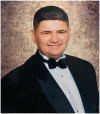Atypical presentation of Angelman syndrome with intact expressive language due to low-level mosaicism
- PMID: 35929060
- PMCID: PMC9544204
- DOI: 10.1002/mgg3.2018
Atypical presentation of Angelman syndrome with intact expressive language due to low-level mosaicism
Abstract
Background: Angelman syndrome (AS) occurs due to a lack of expression or function of the maternally inherited UBE3A gene. Individuals with AS typically have significant developmental delay, severe speech impairment with absent to minimal verbal language, gait abnormalities including ataxia, and an incongruous happy demeanor. The majority of individuals with AS also have seizures and microcephaly. Some individuals with mosaic AS have been reported to have expressive language and milder levels of developmental delay.
Case report: We report a male patient presenting with mild to moderate intellectual disability, hyperphagia, obesity, and the ability to communicate verbally. His phenotype was suggestive of Prader-Willi syndrome. However, methylation testing was positive for Angelman syndrome and additional methylation specific multiplex ligation-dependent amplification (MS-MLPA) study revealed low-level mosaicism for AS.
Conclusion: A broader phenotypic spectrum should be considered for AS as patients with atypical presentations may otherwise elude diagnosis.
Keywords: Angelman syndrome; MS-MLPA; case report; expressive language; mosaicism.
© 2022 The Authors. Molecular Genetics & Genomic Medicine published by Wiley Periodicals LLC.
Conflict of interest statement
Dr. Suma Shankar holds the Children's Miracle Network endowed chair of pediatric genetics and receives salary support from it. Rong Mao, Melinda Procter, Michelle Bosworth, and Denise I Quigley are employed by ARUP Laboratory.
Figures


Similar articles
-
Preserved expressive language as a phenotypic determinant of Mosaic Angelman Syndrome.Mol Genet Genomic Med. 2019 Sep;7(9):e837. doi: 10.1002/mgg3.837. Epub 2019 Aug 10. Mol Genet Genomic Med. 2019. PMID: 31400086 Free PMC article.
-
Atypical Angelman syndrome due to a mosaic imprinting defect: Case reports and review of the literature.Am J Med Genet A. 2017 Mar;173(3):753-757. doi: 10.1002/ajmg.a.38072. Am J Med Genet A. 2017. PMID: 28211971 Review.
-
Genetics of Prader-Willi and Angelman syndromes: 2024 update.Curr Opin Psychiatry. 2025 Mar 1;38(2):95-100. doi: 10.1097/YCO.0000000000000981. Epub 2024 Dec 18. Curr Opin Psychiatry. 2025. PMID: 39804213 Review.
-
Molecular diagnosis of Prader-Willi and Angelman syndromes by methylation-specific melting analysis and methylation-specific multiplex ligation-dependent probe amplification.Clin Chem. 2006 Jul;52(7):1276-83. doi: 10.1373/clinchem.2006.067603. Epub 2006 May 11. Clin Chem. 2006. PMID: 16690734
-
Clinical Utility of Methylation-Specific Multiplex Ligation-Dependent Probe Amplification for the Diagnosis of Prader-Willi Syndrome and Angelman Syndrome.Ann Lab Med. 2022 Jan 1;42(1):79-88. doi: 10.3343/alm.2022.42.1.79. Ann Lab Med. 2022. PMID: 34374352 Free PMC article.
References
-
- Bindels‐de Heus, K. G. C. B. , Mous, S. E. , Hooven‐Radstaake, M. , Iperen‐Kolk, B. M. , Navis, C. , Rietman, A. B. , Hoopen, L. W. , Brooks, A. S. , Elgersma, Y. , Moll, H. A. , & Wit, M. Y. (2020). An overview of health issues and development in a large clinical cohort of children with Angelman syndrome. American Journal of Medical Genetics Part A, 182(1), 53–63. 10.1002/ajmg.a.61382 - DOI - PMC - PubMed
-
- Brockmann, K. (2002). Exceptionally mild Angelman syndrome phenotype associated with an incomplete imprinting defect. Journal of Medical Genetics, 39. http://www.jmedgenet.com/cgi/content/full/39/9/e51 - PMC - PubMed
-
- Camprubí, C. , Coll, M. D. , Villatoro, S. , Gabau, E. , Kamli, A. , Martínez, M. J. , Poyatos, D. , & Guitart, M. (2007). Imprinting center analysis in Prader‐Willi and Angelman syndrome patients with typical and atypical phenotypes. European Journal of Medical Genetics, 50(1), 11–20. 10.1016/j.ejmg.2006.10.001 - DOI - PubMed
Publication types
MeSH terms
LinkOut - more resources
Full Text Sources
Medical
Research Materials

